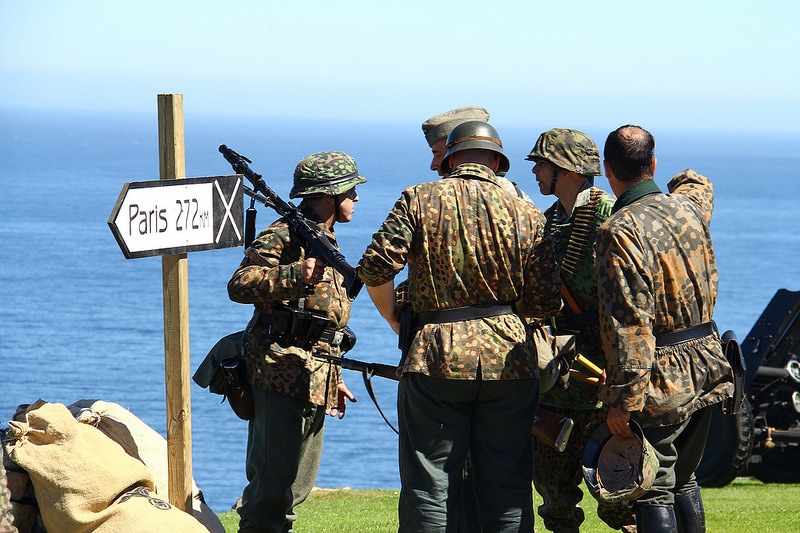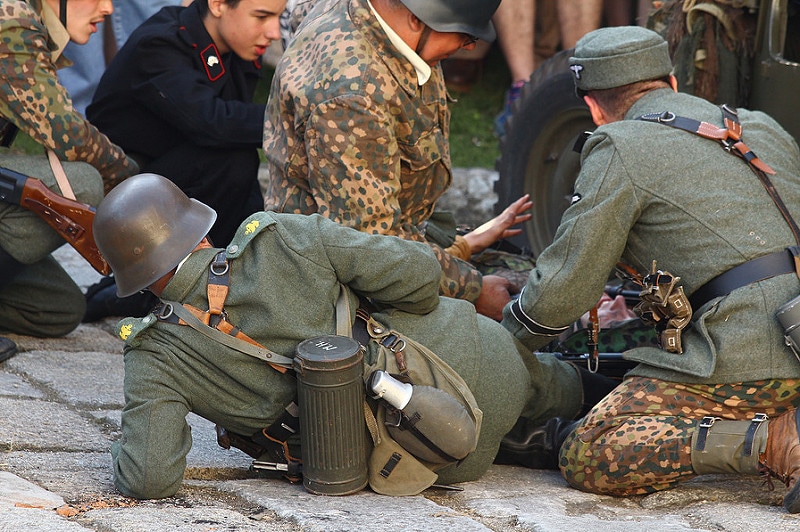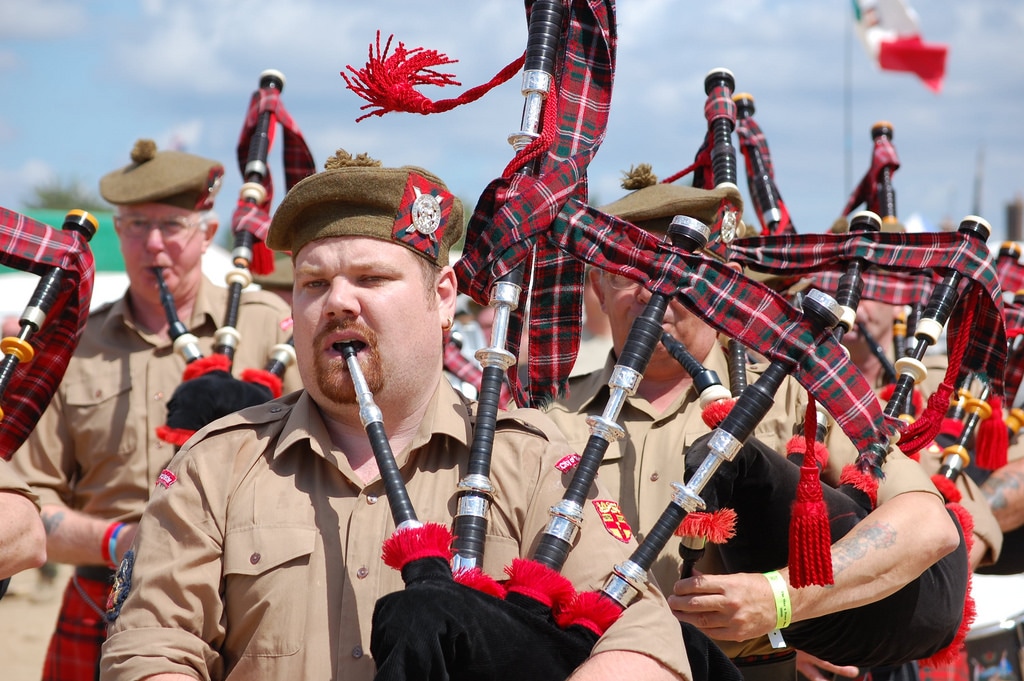|
The 1930’s witnessed the rise of dictators in Europe like Adolf Hitler of Germany, Benito Mussolini of Italy and General Francisco Franco of Spain who intentionally defied international opinion and disregarded the Versailles Treaty and League of Nations.
Their activities and those of Japan began to interfere with prevailing peace in the world. This happened at the time when USA had retreated into isolation leaving the task of maintaining world peace only to Britain and France. The Second World War involved most countries in the world with millions of people conscripted for service in both the military and war related industries. Causes of the Second World War.
COURSE OF WORLD WAR 2The invasion of Poland by German forces on 1st of September 1939 and the subsequent declaration of war against Germany by Britain and France on 3rd of September 1939 marked the beginning of the Second World War.Meanwhile on 17th September 1939, the USSR attacked Poland from the East, as per the secret clause in the Nazi-Soviet act of August 1939. Poland had been overrun by German and Russian forces by 27th September 1939. The country was divided between Russia and Germany. The phoney war.This was a period during world war two when no major military operations were undertaken on the western front although war had been declared on Germany by France and Britain. The period lasted eight months from 3rd of September 1939.It was used by the Allied countries to fully mobilise their forces for an attack on Germany since they had not initially been prepared. Hitler on his part did not want to be involved in war in the west since his armies had not fully recovered from the consequences in the east. During this period, two unsuccessful attempts were made to bring peace;
War in Western Europe.On 9th April 1940, Hitler launched a sea-borne invasion against Norway after attacking Denmark via land. They were assisted by a Norwegian Nazi sympathiser Vidkund Quisling. The prime minister of Norway and his Ministers fled to London and Hitler established a puppet government in the country.The defeat of British and French forces in Norway sparked off a parliamentary revolution in Britain forcing the PM Neville Chamberlain to resign to be replaced by Sir Winston Churchill. Germany extended their attack on Luxembourg, Netherlands and Belgium. The Allies were unable to contain the German advance and even retreated to the French port of Dunkirk, marking a major defeat of the allies in Europe. On 14th June 1940, the Germans captured Paris forcing the new Prime Minister Paul Reynaud to sue for peace with Hitler on 22nd June 1940. Under the peace agreement, The Germans took over Alsace –Lorraine, Northern France and the Atlantic coastline. the French government fled to Vichy, southern France. Why the French were defeated so quickly.
The battle of Britain determined the future of World War II. It forced Hitler to delay his attacks. War in North Africa. WWII in Africa was marked by the Italian successful attack on French and British Somaliland. Under Marshal Graziani, the Italian forces advanced to Egypt though unsuccessful. In June 1942, German forces moved to North Africa to reinforce the Italians.However, British forces led by General Bernard Montgomery moved quickly and captured Malta which would have been used as a base for attack by the Germans. General Montgomery attacked the Germans at El Alamein in Egypt, forcing them to move to west. On 8th November 1942, British and American forces invaded Morocco and Algeria. Although the Germans continued fighting in Tunisia, by May 1943, their Army under General Rommel had surrendered. War in the Balkans.In August 1940, Hitler Attacked and captured Romania and Bulgaria. In April 1941, Yugoslavia and Greece were taken. Crete was taken in May 1941.On 22nd June 1941, Hitler attacked USSR forcing the Russian troops to retreat. However, he failed to capture Moscow before the onset of winter. In June 1942, the Germans resumed their offensive. They were finally defeated at the battle of Stalingrad on 31st January 1943 by the Russian Red Army led by Marshal Zhukov. The Germans lost 300,000 men while 100,000 survivors surrendered. By May 1944, the Russians had pushed the Germans from their territory and were approaching Germany itself. Why the Germans were defeated during the Russian Invasion.The German army was fighting in several fronts at the same time as compared to the allies. This lack of concentration in one area allowed the other Russian army to defeat them.The soviet forces employed the scorched earth policy which left very little for the German forces. The Germans ill-treated the soviet people and exploited their economic resources causing resentment and unity to fight with determination. Weak leadership by the German military leaders contributed to their defeat. USA entry into World War IIThe Japanese attack on the American great Naval Base at Pearl Harbour on the Hawaiian island is the one incident that dragged USA into WWII.On 8th December 1941, the USA, Britain and the Netherlands declared war on Japan. The Germans and Italians also declared war on the USA. Russia kept off the war in Asia having signed a treaty with Japan. Japan resisted fiercely. Her air force sank two British battleships on 10th December 1941.She captured Hong Kong, Malaya in Malaysia and took over the great naval base at Singapore. She also occupied Burma, Dutch East Indies, the Philippines and parts of the western pacific islands. The Japanese forces were repulsed while on their way to Port Moresby, New Guinea in may 1942. In 1942, Britain used her bases in India to attack Japan. Japan attacked India in 1944, but the strong and large allied forces defeated the Japanese at the battle of Kohima. The defeat of Germany.After 1942, the tide of success began to turn against Hitler. German forces were defeated by the allies in North Africa and France. By March 1945, the Allies had crossed the Rhine, pushed the Germans out of France in June 1944.The Germans were meanwhile facing the Russian attack from the East. Hitler accepted defeated and handed over power to one of the Military Generals to retreat to an underground Bunker in Berlin. On 29th April 1945, Hitler married his long term Mistress Eva Braun. On the following day, he committed suicide by shooting himself while Eva Braun took Poison. On 7th May 1945, the Germans surrendered unconditionally. Why the Germans were defeated.
The defeat of Japan.After Germany surrendered, Japan continued with fierce fighting sometimes employing the services of suicide bombers known as Kamikaze. The allies were able to liberate the territories captured by Japan.After the defeat at Okinawa, Japan was certain of defeat, but her PM , Admiral Suzuki Kantaro, did not believe in unconditional defeat. On 6th August 1945, a bomber Aeroplane, Enola Gay, commanded by Colonel Paul Tibbets, flew over Hiroshima dropping a 4535.15kg atomic bomb. About 78,000 people died. On 8th August 1945, Russia attacked Japan. On 9th August 1945, an even larger Bomb was dropped on Nagasaki killing more than 40,000 people. Japan surrendered unconditionally on 15th August 1945 bringing WWII to an end.
Factors that enabled the allied powers to win the Second World War
Social results of Second World War
Political effects of the World War II.
Economic effects of World War 2.
0 Comments
|
Archives
April 2024
Categories
All
|



 RSS Feed
RSS Feed